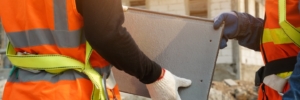Why You Or Your Supplier Should Be AISC Certified
In the steel industry, we know that safety and reliability are two of the most important qualities that clients look for in a fabricator.
What Is AISC Certification?
The American Institute of Steel Construction sets standards for quality and safety for steel fabricators across the country. To become certified with the AISC, a supplier must submit to an audit by the AISC, which looks over the workspace, employee training and other areas of the company in order to determine if they qualify for certification. The official guide for certification standards for steel fabrication is over sixty pages long, and the auditing process is extremely thorough; the process of becoming certified can take up to six months. Aspects of a supplier that are looked at when being audited for certification include:
- Effective implementation and communication of an emergency plan
- Safety training for new hires
- Proper training for all employees
These are only a couple of the many aspects of your business that the AISC would look at in order to consider you for qualification. Generally, the goal of being audited is to improve productivity, worker safety and quality standards.
What Does It Mean For You?
The AISC is a known, industry-recognized standard-maker. The thorough, rigorous process for becoming certified is well-known in the industry. Any potential employee or business partner who knows that you are AISC certified knows that your company has been thoroughly vetted to ensure that its quality is a cut above other steel fabricators. Employees will know that you value worker safety and prioritize effective communication. A potential client will know that your company will produce a high-quality product.
This is the first and most obvious benefit: having an AISC certification differentiates your company from the competition. This certification makes you more attractive as a business partner, since passing the auditing process means that you have met its lofty quality standards.
The other benefit is less obvious but more logical: by going through the auditing process, you will improve just about every aspect of your business. It will make you attractive to new employees and partners, but it isn’t just a certificate or another line on a resume. After your company successfully completes the process, it will run smoother, more efficiently and with better safety standards in place. This could improve morale, output and any number of other parts of your business.
AISC certification is a labor-intensive way to make sure your business is ready to serve new clients for years to come.
Ready to Incorporate Continuing Education and Certification?
Construction Safety Experts offers continuing education and assistance with the certification process to steel industry professionals based on the American Institute of Steel Construction (AISC) certification process. AISC Certification is the most widely lauded, recognized certification program in the structural steel industry.
Contact our AISC Certification experts for assistance with the application process and preparation initial and subsequent audits with our training and mock auditing services – Contact our team online, or call (919) 463-0669 today!





